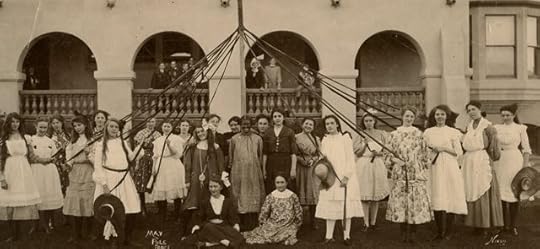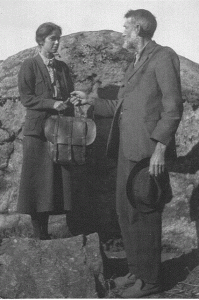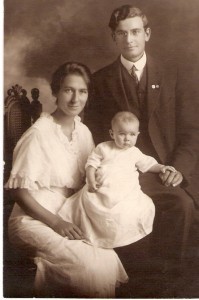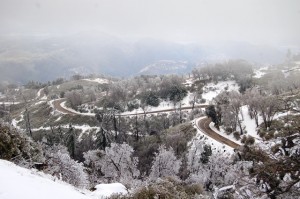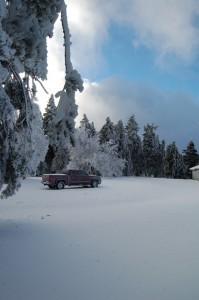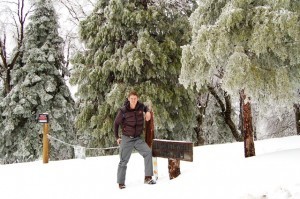Barbara Anne Waite's Blog, page 4
September 13, 2013
Modern Youths (1931) Weakened by Too Much Excitement & Ease
I have read with interest some of Elsie’s published articles written many years ago. By 1931 Elsie, Jack and my mother Catherine were living in the city. But Elsie’s article written for a teachers magazine in 1931 reflects that her heart was still longing for the country life she had experienced on Palomar Mountain. I will share excerpts from that article written 82 years ago.
Our Friend Nature
by Elsie Roberts -June 1931
A thousand years from now historians are apt to declare the parents of this era a paradox- studying the problems of child training as they were never studied before, yet too absorbed in their own hectic rush to come to close to their also over-stimulated children. [I wonder how Elsie would view the overstimulated children of today?] Sometimes this accusation is too true. There is at least one very definite way in which parents and children may not only come to understand each other better but both acquire meanwhile that vital sharing of common interests and joys, sense of leisure and serenity. This is in cultivating the out-of-doors. It need not be done with hoes or tractor, but by being upon more intimate calling terms with nature. Grant that modern life is too complicated and artificial for the greatest good of the coming generation, then go to the direct source for all that is simple and natural.
In California even city dwellers have abundant opportunities to give their children recreation, if not work, out of doors. Yet often these opportunities are neglected. Of course the youngsters play outside. But as they grow older do they always arrange for picnics and mountain weekend’s as eagerly as we might? Is a love of the great open spaces an essential part of their lives, and is it fully satisfied? Is a beach or mountain trip included in the budget even if the renovating of the furniture has to be postponed?
The very recent trend is, fortunately, a reaction back to the land. There is a growing appreciation of the out of doors. We have innumerable nature study groups and summer camps for boys and girls, while out in the rural districts the splendid 4-H clubs are becoming more and more popular, helping the farm youngsters to value their peculiar advantages. Some modern parents, no matter how fond of bridge or business realize that hikes to the foothills with their children are more important. One such admits that she hopes they may prove a specific antidote to jazz.[Remember Elsie wrote this in 1931!]
Like all other good things, a real interest in nature needs to be encouraged and developed. A parent can’t afford to loaf on this job. The earlier he starts and the more fascinating he makes it, the more surely the child will respond. diversions particularly strengthen the bond between fathers and mothers and their offspring. As the youngsters energies are not satisfied by scenery alone, it is well that books, hobbies, and sports should give added contact with nature, and foster a deep friendship with her.
Yet nature in her various aspects is herself fascinating, even thrilling. Here the outside is always available; and though we do miss the novelty of definitely separate seasons; these can always be seen in our own never too distant mountains. Often California families not only stay there while in the summer, but in winter take the children to see the snow. Yet many do not realize how easily they may also let their native sons and daughters know the charm of Eastern Springtime- that burgeoning of bare boughs, bursts of clear streams from every mountain slope to meadows blossoming with butter cups and blue violets and aged with tasseling Oaks and the still white beauty of dogwood trees. Every child has the right to discover for himself that it is anything but boresome!-To leave the beaten trails, to know the forest primeval.
An appreciation of beauty is indeed the greatest asset of culture. An acquaintance with nature is a vital part of education, interpreting and adding to the enjoyment of the formal arts, while in itself it is indispensable. A charming girl lately exclaimed over a marvelous thicket of the azaleas beside a far isolated mountain stream; “they smell like heavenly French perfume! But why did anybody plant all those way off here?”
How many, having eyes see not! It is as true as it is trite that one’s vision is foreshortened by his own limitations, and he sees only that which he knows how to look for. So many a youth, tragically and unnecessarily bored, goes blindly on, never dreaming of the freshness and glory of the out-of-doors. If a primrose by a rivers brim is to him nothing more, it is his loss, but perhaps his parents fault. What better can education do than to train his perceptions and enlarge his capacities?
In this so-called machine age the aesthetic urge needs special encouragement, and with it the inextricable intermingled spiritual values. Nature can add unspeakably to inner resources. Where there is the feeling that a thousand years are but as yesterday, sanity comes out of chaos. The famous surgeon, Dr. Charles May,o is quoted as recently telling a women’s club that the very prevalent mental disorders are caused by our speed of life and the fact that we are an emotional people. Overwrought nerves are considered one great cause of juvenile delinquency. But though the youths fiber may be weakened by too much excitement and ease, his instincts are right. As a reaction to the modern strain he craves the primitive, reveling in “Western” novels and talkies [ By the early 1930s, the talkies were a global phenomenon.] Let him know the figurative West in a literal way!
I would love to hear from you some response to Elsie’s thoughts of 1931.
August 12, 2013
AMAZING ARIZONA
Arizona is an awesome State in which to take a short summer vacation! Yes, it was hot in Phoenix as we briefly stopped there to spend the night, however Flagstaff, Prescott and Sedona were temperature-perfect and we delighted in awesome views and weather last week.
We traveled first to Wickenburg to drop of 20 copies of “Elsie” at Desert Caballeros Museum and at a nice gift shop called Old Livery. Arizona has some very unique and interesting museums. We then went on to Prescott where we discovered a new bookstore since our last visit. The Perigrine Bookshop opened about 9 months ago and happily took a couple of copies of “Elsie.” I love independent bookstores! The Javalina Cantina in Sedona was recommended for dinner and it was good advice. This is the second time we have stayed at “The Views Inn” there. It is very attractive and it does have a spectacular view.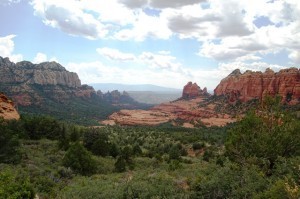
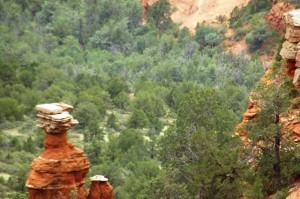
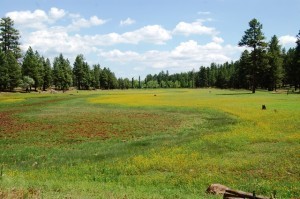
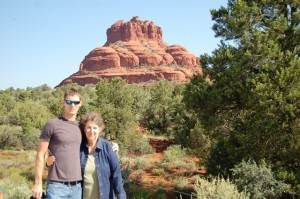
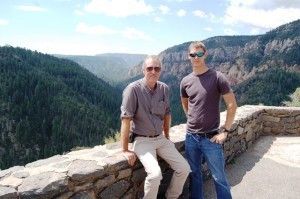
The next morning we drove to Flagstaff via Oak Creek Canyon. I have seen it several times but each time it leaves me in awe of God’s creativity. It is easy to understand why Elsie wrote 100 years ago that the schoolroom doors flew open and a person riding a horse shouted into the school “creek’s up!” Elsie was amazed that they did not ask permission but students fled out of the school for their homes. The water flowing down those steep mountainsides rushed down Oak Creek Canyon and would make a dangerous crossing of lower Oak Creek for students.
In Flagstaff we visited 3 locations that sell “Elsie” and dropped off a few more books. We also visited a new gift store that may soon carry “Elsie.” This one was in the Riordan Mansion State Historic Park. It was built in 1904 and was the home of two Riordan families. It contains over 40 rooms and is the arts & crafts style of architecture. They do guided tours and reservations are recommended. It is worth a visit when in Flagstaff.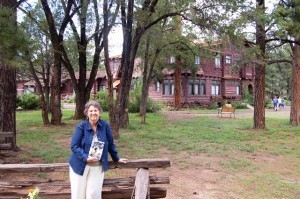
From Flagstaff we drove back down into Sedona on Schnebly Hill Road, an unpaved Forest Service road that drops steeply down into Oak Creek canyon. Quite an off-road adventure! The signs warn: “Dirt road requires high clearance vehicle.” I felt like perhaps it might add “life insurance recommended.” We passed a number of cute pink tourist jeeps that were enjoying the beauty of the red rocks. We made a quick stop at the Sedona Historical Society and they too may begin to carry “Elsie.” We briefly stopped for our son Joshua to look at Montezuma’s Castle National Park. That is the location where Elsie spoke of Karl teasing her by extinguishing the lamp once they were up inside the cold pitch black Indian dwellings and claiming he had no matches. She often told the story of feeling genuine terror of being trapped forever in those caves. The dwellings were declared a U.S. National Monument in 1906. There is a paved trail a 1/4 mile from the visitor center along the base of the cliff containing the ruins. Access to the ruins has not been allowed since 1950. About 350,000 tourists visit the site each year. I was thrilled that a recent letter was from a reader in Australia who bought “Elsie” at Tuzigoot National Monument when visiting friends in Arizona. This reader wrote from Australia to say how much she had enjoyed the book. I LOVE hearing from readers and am delighted with 233 reviews on Amazon. August 15 & 16 the kindle version of “Elsie” will once again be free. Please let any friends know that might enjoy a free Kindle copy. 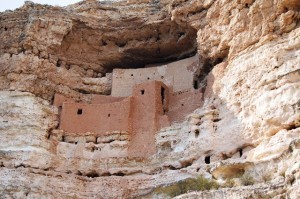
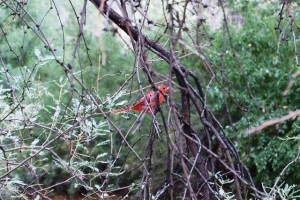
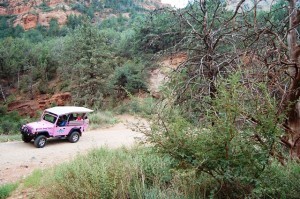
July 8, 2013
4,000 Words Worth of Photos
So very sad that Elsie’s only Grandson and my treasured brother, Daniel Hale Beishline died April 15th. He was 70 and loved and respected by all who knew him. This was my favorite photo of my sister Nancy and I with Dan.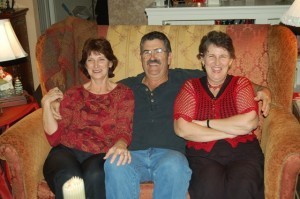
The second photo is one of the last photos of Elsie on her beloved Palomar Mountain. She is surrounded by our family.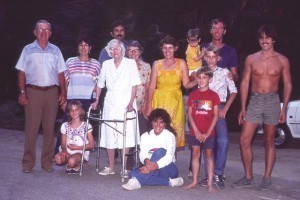
Our grandchildren, Elsie’s great-great grand-children were up Palomar Mountain last weekend.This is the evening hike near the old property where Elsie hiked more than 100 years ago. Tradition is such a special thing.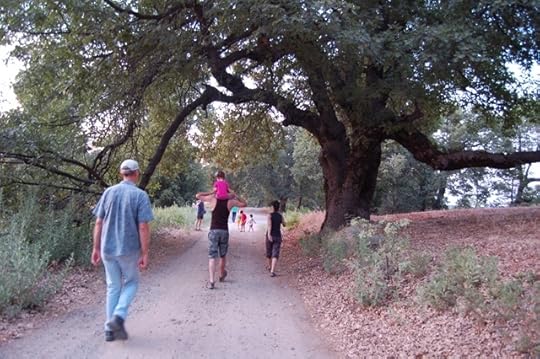
I would love to hear from you. Letters encourage me to keep writing “Elsie’s Mountain Years.” Thankful for 229 reviews for Elsie. Thankful Tuzigoot and Montezuma’s Castle National Park have ordered another 40 copies. I think between those two National Parks they have purchased nearly 600 copies.
At the Memorial for my brother Dan I reconnected with my childhood mountain friend Stephanie Bailey Cooper. We roamed the mountain while staying with our grandmothers during the summers. 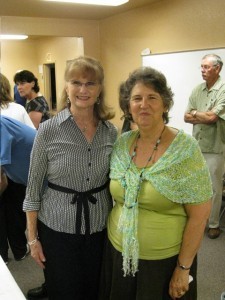
June 25, 2013
Traveling Back in Time- Palomar Mountain via Nate Harrison Grade
Elsie moved from Virginia to Long Beach, California in 1897. The city of Long Beach had been incorporated that same year. The first lots in Long Beach were sold in 1881. It was advertised as a seaside resort community, but it was a semi-arid landscape. The variation of temperature between winter and summer was often only 20°. Today Long Beach is the seventh largest city in California. In 1897 the attraction to Elsie’s family was the health potential for her younger brother Gilman. Sadly, he only lived for seven years after they moved, dying in 1904. Elsie’s father, Alonzo Hayes, knew the family longed for the lush green countryside they had left behind in Virginia. So in the summer of 1904 Alonzo decided the family needed a trip up Smith Mountain. It was quite the adventure, taking three days by horse and wagon to travel about 120 miles. The family camped along the way sleeping under the wagon. In those days there was only a wagon track that made the ascent up the mountain grade. It took less than 10 miles to go from 700 feet to 4,700 feet. Today that wagon track is called the Nate Harrison grade. It is named for a freed slave who homesteaded a ranch that served early travelers by providing water for the horses and weary mountain visitors. Elsie told many stories about her friend Nate Harrison. He was quite the character and Elsie enjoyed the refreshment from his mountain spring and the shade from the lovely oak trees. Recently we decided to travel up Palomar Mountain (formerly Smith Mountain) via the Nate Harrison grade. It remains not much more than a wagon track. It is a graded road, extremely steep, winding through sagebrush until you reach the Nate Harrison ranch. Suddenly lovely oak trees replace the low sagebrush. The temperature seems to drop, the birds begin to sing and you feel you are on a mountain. We were the only car attempting to ascend the mountain on Nate Harrison grade that day. I tried to imagine what it was like that first trip up for Elsie. Even in a four-wheel-drive vehicle I felt fear as I looked upon the treacherous drop-off. Yet I could imagine 16 year old Elsie giggling in delight as they approached the lovely oaks and the smiling “Uncle Nate”, as he affectionately became known to them. Soon after that first trip up the mountain Alonzo Hayes purchased an apple ranch that became their summer home. This week when my grandchildren travel up Palomar they represent the sixth generation to love the mountain. We will travel up the paved road created in the 1930′s. Perhaps someday my grandchildren will experience the adventure of traveling via the same road Elsie first took over 100 years ago. I look forward to the fall and the prospect of picking apples from the trees Alonzo planted in 1904. “Elsie’s Mountain Years” will include some of her stories about Uncle Nate and mountain travel in those early days. This photo taken a few weeks ago shows the windy road and the trees burned in a recent forest fire. I love hearing from readers and I am delighted with 225 Amazon reviews for “Elsie.”
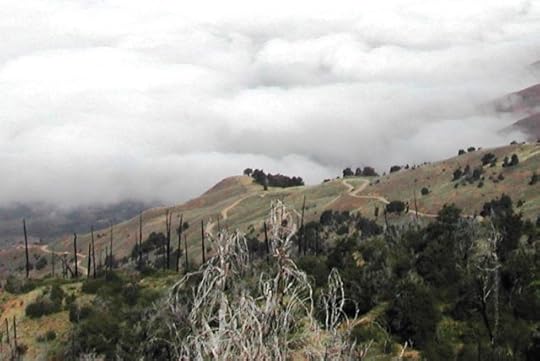
Nate Harrison Grade
May 24, 2013
ELSIE & SEMANTIC DRIFT
Wikipedia describes “semantic drift” as the evolution of word usage usually to the point that modern meaning is radically different from original usage. Every word has connotations which can be altered over time.
Some have asked why I didn’t attempt to write “Elsie” as a novel. There are numerous reasons but one reason is that I loved the feel of reading her word choices.
I could have explained to readers that Elsie had a delightfully positive outlook. For me it was more significant to let you discover that through her choice of words. She did occasionally write of school troubles, mischievous students and disgusting gossip. But she chose to use words like “ramble by the creek”, “splendid Santa Fe concert”, and “Jack and I tramped in the wilds… glorious.” When I was a child she was already a widow living in a very small bungalow and working as a librarian. I suppose the word I heard her say most often that impressed me then was “glorious.” Life was just exciting for her and quite often she described things as “glorious.” I noticed in the book many of her early letters and diary entries used the word “splendid.” It was only after she met Jack that her favorite word became “glorious.” At age 29 love brought her joy and made life “glorious.”
I absolutely love hearing from readers. One recently wrote: “My favorite word in it (the book) so far, ‘cunning.’ My grandmother always used that word to mean attractive & small, not evasive.” Sure enough, when I looked, one dictionary defines cunning as “Marked by or given to artful subtlety and deceptiveness.” So I sat down with my book after that note from that reader looking for words that are not in use today or have had a semantic drift from how Elsie used it.
Here are some examples:
“I won’t write decently…but you should see my blackboard penmanship!” Since almost everyone today uses a keyboard to write “penmanship “is a dying art.
Elsie wrote of studying the “school laws.” Teachers help me out here. Do they ever speak now of “school laws?”
“I thought ‘white slavery’ with horror” Today we would refer to human trafficking.
“I gave some of the cake in oiled paper.” I imagine she was referring to a sort of waxed paper.
“In order to be sensible…” Somehow I think sensible has disappeared from our word usage – and lives.
“Some of my children are dear…others are common” Oops, surely not used today in our politically correct world.
“We’ll have to take a KODAK next time.” (Photograph.)
“One of my little boys has just ridden off in chaps. He looks so cunning!”
“If they send me a wire.”
“I feel unutterably more glad.”
“I seem to be getting very husky.” No woman today would ever refer to herself as husky.
We ate at a rough “oil-cloth” covered table beside the gay, howling ‘Pike’ and ordered hamburg steak.”
“Little Howard Turtley called on me.” Too bad we seem to have lost the art of “calling” on people. We text.
“Struggles at school with wayward children.”
“Worn to a frazzle.” I imagine today she would say “stressed-out. “ I feel sure stress existed for teachers back 100 years ago but that word did not appear to be in Elsie’s vocabulary.
“Talked most seriously to Campbell and Carl, ‘moral suasion’ when I thought of the strap.”
“Mr. Twitty took us out in machine.” “Lovely machine trip.”
“Dick Connors asked me to go see the ‘pictures.’”
“Listened to Victrola.”
“Rushed home and donned a middy and went on a picnic.” This is perhaps my favorite “semantic drift.”
“Reveled in Dorothy.”
“Mrs. Gold is a tonic.”
“The apparatus was lost in the boat.” This was in reference to an early movie camera.
“Myra wasn’t very trim.” I added a footnote in the book to that one because I knew she was saying Myra’s diaper was dirty! This is my second favorite semantic drift Elsie used.
“They are in slang what we call ‘mutts!’” This was not in reference to a dog but some men.
“We made a compact.”
“I also got a bungalow apron housedress.”
“Took a bus for Elsinore. During a puncture delay…”
So my treasured readers do you have a favorite semantic drift that you liked in the book? It would be ‘glorious’ to hear from some of you. I am elated to have 214 reviews. Thanks, readers, for input.
April 30, 2013
May Day -Long Beach High 1907
I love vintage photos. This May Pole picture from Elsie’s years at Long Beach High School is one of my favorites. Elsie is dressed as Alice in Wonderland, 5th from the right. Her friend Ruth, mentioned in the book, is next to Elsie in a white dress. Elsie is wearing a white apron and holding a ribbon. This will be a photo included in “Elsie’s Mountain Years.”
This lovely poem written by Elsie had a date written on it indicating she had written it during the years of the great depression. Elsie’s family had sold the apple ranch and she was cherishing her memories of her beloved mountain. In 1947, the year Jack died and the year I was born, Elsie began her third season of life on Palomar Mountain. She had fallen in love with Palomar in 1904 when she went up as a 16 year old girl. Then she spent a number of years as a young bride and new mother operating the apple ranch and resort on Palomar. The property was lost about the time the great depression hit. Her third season of returning to the mountain she loved was in 1947 when my parents and Elsie went together to build a small and still-beloved cabin. It was in the he years between, when she only had memories, that she wrote “Haunted.”
Haunted
by Elsie Roberts
There are those who fear shapes in the darkness,
Those who tremble at dream visitations—
Ah, but I—I am haunted by beauty,
When the past and absent are present,
And, with magic of memory, mountains
Far away, long unseen, rise about me.
In the blackness of night, tossing, sleepless,
(Then when all things are hidden, and seen, too;)
Or perchance it may be at mid-morning,
As from prosaic floors dust is garnered,
They are there: sudden, vivid, a vision.
Autumn leaves on a trail that winds, climbing;
High above, swaying evergreen branches;
Shining vistas of breath-taking grandeur;
Frail wild flowers by waterfalls nodding.
I hear birdcalls and wind in the forest,
Catch the tang and fragrance of mountains.
What a boon, to be haunted by beauty!
I am thrilled to discover that many readers have enjoyed Elsie’s descriptions of life in the new state of Arizona. I thank readers who have taken the time to write reviews. Amazon’s Elsie page now has 203. The Goodreads webpage has a feature called Listopia. There are thousands of books that people have added as favorites to these lists according to the genre. ” Elsie” has been voted on in 4 of the many lists. Here is the link to those lists http://www.goodreads.com/list/book/13027295
I was amazed to see “Elsie” is #1 in “The Old West in First Person” from 96 books. Voted second in the “American Frontier” list out of 196 books. It is also listed in “Women’s Journals & Diaries in History” and “Women’s Correspondence-Letters in History.” I am grateful for readers who have been so supportive.
On May 1st and 2nd “Elsie” will be FREE again as a KINDLE book. I appreciate it if you would spread the word. Three months ago when it was free there were almost 20,000 downloads! I wonder how many more kindle readers are out there?
Happy May Day !
April 4, 2013
MY MOTHER WAS AN “ALIEN”!
Here is one of the interesting stories that will be included in “Elsie’s Mountain Years.”
My mother Catherine was born in Elsinore, California March 31, 1918. She always referred to herself as a “rare” native Californian. However, from her birth until Sept. 3, 1920 my mother Catherine was actually an “alien” residing in California. Her mother, Elsie was born in Virginia in 1888, but she, and her children, were classified as aliens in the eyes of the U.S. government when she married Jack because he was a Welsh citizen. This was because, after 1907, marriage determined a woman’s nationality completely. Under the act of March 2, 1907, all women acquired their husband’s nationality upon any marriage occurring after that date. This meant U.S.-born women citizens lost their citizenship by any marriage to an alien.
On September 22, 1922, Congress passed the Married Women’s Act, also known as the Cable Act. This 1922 law finally gave each woman a nationality of her own. No marriage since that date has granted U.S. citizenship to any alien women who married American husbands, nor taken it from any U.S.-born women who married an alien.
Jack became a naturalized citizen on Sept. 3, 1920. One of the stories Elsie loved to share was about her father turning over the official United States postal bag to her once she could be recognized as The Postmistress of Palomar Mountain. As an alien she could officially only assist her father but not serve as Postmistress. So the newspaper did this wonderful picture of Alonzo Hayes turning over the leather mailbag to Elsie when she became a citizen once again.
How I wish I had that old mailbag. Elsie served for several years as postmistress on Palomar Mountain. As a child I loved helping Adalind Bailey while she served as Postmistress on Palomar. Her Granddaughter Stephanie and I thought it was great fun. The old Bailey Post Office had these lovely old wooden “cubby-holes” that held each person’s mail. While in high school I once challenged a friend that he could send a letter addressed to “Barb” Palomar Mountain, California and it would reach me. He sent it and I think I might still have that letter sent on a dare. I come from a long line of people who saved mementos. That is why I can write books about Elsie. She recorded so many memories on paper and saved everything.
I will share one other vintage photo with you now. In March 1915 Elsie wrote about her sister Alice having a baby named Dorothy. In Elsie’s diary for June 1915 she wrote, “All day long I have watched Dorothy, my own niece. I have held her close and tried to see life aright. I have loved too much. Alice and Ernest are good for me. I think wee Dorothy has saved me! I am trying to see the sunshine of life.” That “wee baby” Dorothy just celebrated her 98th birthday. She wrote to tell me that she enjoyed reading “Elsie.” So here is a vintage picture of “wee” Dorothy and her handsome parents. Happy Birthday dear Dorothy.
I am thrilled that I now have 192 reviews on Amazon. Special thanks to those of you who have encouraged me in this way. I am working on “Elsie’s Mountain Years” and looking forward to sharing more with you as I progress.
March 2, 2013
Elsie’s Mountain Years- A Winter Tale -Then & Now
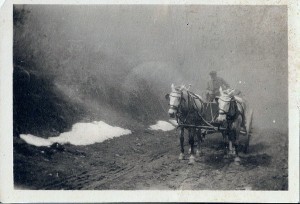
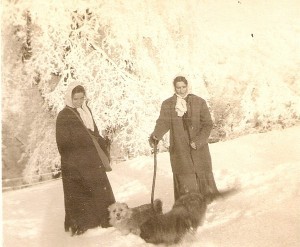 One night journey up that old grade is certainly unforgettable. In fact, that whole trip is indelible. It was in December, 1909. We were again living in Long Beach, but for the first — and only — time my parents were trying out the idea of spending the winter at the ranch, where we girls were then there for the holidays. Hylinda must have been at Los Angeles Normal school that year and for some reason she did not go up to Palomar for Christmas. Alice was staying with our friends the Hands and attending High School in Pasadena. I was a Pomona College Junior, living in Sumner Hall, then the girls’ dormitory. A few days before Christmas Alice took the Santa Fe at Pasadena, I got on the same train when it stopped in Claremont, and Papa met us with team and wagon in Temecula.
One night journey up that old grade is certainly unforgettable. In fact, that whole trip is indelible. It was in December, 1909. We were again living in Long Beach, but for the first — and only — time my parents were trying out the idea of spending the winter at the ranch, where we girls were then there for the holidays. Hylinda must have been at Los Angeles Normal school that year and for some reason she did not go up to Palomar for Christmas. Alice was staying with our friends the Hands and attending High School in Pasadena. I was a Pomona College Junior, living in Sumner Hall, then the girls’ dormitory. A few days before Christmas Alice took the Santa Fe at Pasadena, I got on the same train when it stopped in Claremont, and Papa met us with team and wagon in Temecula.
Breakfast was early, before our thirty-mile drive. But we were only on the lower reaches of the grade when dusk fell. It was bitter weather. We all wore heavy coats, but the icy wind chilled us through and through. As usual, we girls walked part of the way up to save the horses. When we climbed back to the seat we were glad to pull about us the heavy quilts Mama had thoughtfully provided.
“It’s going to storm, all right.” Papa said hoarsely looking at the black sky that seemed to surround us. “And it’s getting so dark I can’t see the road. One of you will have to walk ahead and carry the lantern.”
We put the thick quilts over our heads and fastened them under our chins with big safety pins (those must have been sent down by our loving mother, too). As we walked along the edge of the road the howling wind tore our “shawls” out like balloons and almost blew us over the precipices at the lower side of the grade. We took turns carrying the flickering lantern. The horses bent their heads and toiled ahead. Papa was bent, too and muffled and bearded.
On that dark night on the bleak mountain side I thought we must look like the Russian peasants I had seen pictured. Almost sixty years later that scene is still vivid in memory.
We reached the forest, and finally the ranch with its warm fires and warmer welcome. For days afterward Papa was very ill. Later Mama said it must have been pneumonia. And for days the snow fell, silently, endlessly. Mama and I went out with an axe and cut down a Christmas tree; Aunt Mamie filled our stockings, as she always did for Christmas, with contents earlier ordered from Sears and Roebuck, the “farmers’ Bible” which Alice brought out for reference on every possible occasion.
For many years mail came to the “Nellie” post office at Baileys’ three times a week, the carrier and his horse using the using the old trail, once an almost impossibly steep road, a bit of which may still be seen near what is now the south grade up the mountain, built to provide a safer journey for the “Big Eye” of the observatory. Even when a mail day fell on a holiday the mall came, just the same. This year Christmas was a mail day. The storm was over, the sun brilliant across the fresh, deep snow and the evergreens. Never again, I fear, will there be such beauty on our mountain as on that pre-smog day when we had real rainy seasons. Beyond the verdant hills and valleys the ocean glittered with the distant islands standing out sharply in deep blue.
On that sacred day in the midst of such beauty my heart sang as I walked lightly on top of the snow through that shining world. Christmas gift packages and greetings that I carried back only added to my always-remembered joy.
Over 100 years since Elsie wrote that winter tale , the fifth generation ( our youngest son Joshua) was on Palomar enjoying a winter wonderland. Joshua is Elsie’s youngest great grandchild. I posted a picture of his truck in the snow. What took Elsie a full day via horse and wagon (from Temecula to the mountain top) took Joshua less than an hour. I added a picture to show the winding mountain road, now paved and maintained. The sign beside Josh says “Since 1904.” I spent several days working on the next book and wanted to share with you a little excerpt of this winter story she wrote. The pictures at the top are Alice and Elsie in the snow and her father Alonzo Hayes driving the wagon up Palomar.
Elsie’s Mountain Years- A Winter Tale -Then &Now

 One night journey up that old grade is certainly unforgettable. In fact, that whole trip is indelible. It was In December, 1909. We were again living in Long Beach, but for the first — and only — time my parents were trying out the idea if spending the winter at the ranch, where we girls were them there for the holidays. Hylinda must have been at Los Angeles Normal school that year and for some reason she did not go up to Palomar for Christmas. Alice was staying with our friends the Hands and attending High School in Pasadena. I was a Pomona College Junior, living In Sumner Hall, then the girls’ dormitory. A few days before Christmas Alice took the Santa Fe at Pasadena, I got on the same train when it stopped in Claremont, and Papa met us with team and wagon in Temecula.
One night journey up that old grade is certainly unforgettable. In fact, that whole trip is indelible. It was In December, 1909. We were again living in Long Beach, but for the first — and only — time my parents were trying out the idea if spending the winter at the ranch, where we girls were them there for the holidays. Hylinda must have been at Los Angeles Normal school that year and for some reason she did not go up to Palomar for Christmas. Alice was staying with our friends the Hands and attending High School in Pasadena. I was a Pomona College Junior, living In Sumner Hall, then the girls’ dormitory. A few days before Christmas Alice took the Santa Fe at Pasadena, I got on the same train when it stopped in Claremont, and Papa met us with team and wagon in Temecula.
Breakfast was early, before our thirty-mile drive. But we were only on the lower reaches of the grade when dusk fell. It was bitter weather. We all wore heavy coats, but the icy wind chilled us through and through. As usual, we girls walked part of the way up to save the horses. When we climbed back to the seat we were glad to pull about us the heavy quilts Mama had thoughtfully provided.
“It’s going to storm, all right.” Papa said hoarsely looking at the black sky that seemed to surround us. “And it’s getting so dark I can’t see the road. One of you will have to walk ahead and carry the lantern.”
We put the thick quilts over our heads and fastened them under our chins with big safety pins (those must have been sent down by our loving mother, too). As we walked along the edge of the road the howling wind tore our “shawls” out like balloons and almost blew us over the precipices at the lower side of the grade. We took turns carrying the flickering lantern. The horses bent their heads and toiled ahead. Papa was bent, too and muffled and bearded.
On that dark night on the bleak mountain side I thought we must look like the Russian peasants I had seen pictured. Almost sixty years later that scene is still vivid in memory.
We reached the forest, and finally the ranch with its warm fires and warmer welcome. For days afterward Papa was very ill. Later Mama said it must have been pneumonia. And for days the snow fell, silently, endlessly. Mama and I went out with an axe and cut down a Christmas tree; Aunt Mamie filled our stockings, as she always did for Christmas, with contents earlier ordered from Sears and Roebuck, the “farmers’ Bible” which Alice brought out for reference on every possible occasion.
For many years mail came to the “Nellie” post office at Baileys’ three times a week, the carrier and his horse using the using the old trail, once an almost impossibly steep road, a bit of which may still be seen near what is now the south grade up the mountain, built to provide a safer journey for the “Big Eye” of the observatory. Even when a mail day fell on a holiday the mall came, just the same. This year Christmas was a mail day. The storm was over, the sun brilliant across the fresh, deep snow and the evergreens. Never again, I fear, will there be such beauty on our mountain as on that pre-smog day when we had real rainy seasons. Beyond the verdant hills and valleys the ocean glittered with the distant islands standing out sharply in deep blue.
On that sacred day in the midst of such beauty my heart sang as I walked lightly on top of the snow through that shining world. Christmas gift packages and greetings that I carried back only added to my always-remembered joy.
Over 100 years since Elsie wrote that winter tale , the fifth generation was on Palomar enjoying a winter wonderland. Joshua is Elsie’s youngest great grandchild. I posted a picture of his truck in the snow. What took Elsie a full day via horse and wagon (from Temecula to the mountain top) took Joshua less than an hour. I added a picture to show the winding mountain road, now paved and maintained. The sign beside Josh says “Since 1904.” I spent several days working on the next book and wanted to share with you a little excerpt of this winter story she wrote. The pictures at the top are Alice & Elsie and her father Alonzo Hayes driving the wagon up Palomar.
February 9, 2013
I LOVE HEARING FROM READERS !
In his TV career he was the winner of many awards including two Emmys for his predictions of severe weather. He also writes books and I discovered this “gem” on his blog :
JOHNBECKMANBOOKS.com
The Price isn’t Right!
Posted on February 2, 2013by johnbeckmanbooks
“I am reading a fascinating book entitled, “Elsie – Adventures of an Arizona school teacher – 1913-1916.” I love American history. (European history? Not so much.) The great thing about Elsie is that the book is made up of letters to and from her family in California and the entries in her diary. 1913 was just one year after Arizona became a state and much of it was “primitive” by today’s standards. But Elsie was an adventurer and an outdoors-type individual so she made the most of it. Her letters reveal how much she enjoyed the new sites and landscapes she discovered. She never passed up the opportunity to hike to some intriguing place, with no regard for the weather. She never let rain or snow or cold or heat restrain her activities.
What I discovered from reading this true account of another age is just how much we, as human beings, have missed as we have given up personal relationships in exchange for modern “gadgets.” In Elsie’s Arizona people visited each other. They read to each other. They walked everywhere. (Occasionally Elsie will reveal a 30 mile trip in someone’s “machine” as a great adventure.) People intermingled and entertained each other with only the occasional trip to the “movies.” They played the piano and the mandolin and sang songs. They spent much time reading. (How long has it been since you have read anything other than “Oprah” magazine?) Since they ate sparingly and simply and did so much walking there were no obese people, one of today’s greatest avoidable tragedies in America.
(No matter how much she ate, Elsie never weighed more than 100 pounds.)
I have lived in my current neighborhood for about eight years. Only three times in that period has a neighbor come to my door – and I have only approached others the same minimal amount of time. I have only been “in” two of the homes and nobody from my neighborhood has been in my home. It is a novelty to see anyone walking and those are only the most devoted health “nuts.”
What do we do in our isolation? We sit at our computers and send emails and cruise Facebook and write blogs such as this. We idle away our lives with very little interaction with other human beings. Call me an old fogie (which I am) but I can’t help but think that for everything we have gained in technology over the years we have paid a high price. We have never learned the “art” of civil conversation and the pleasure of enjoying the company of other people.
I grew up without the convenience of indoor plumbing or, in my earliest years, electricity so it would not be too difficult for me to return to the simple life that Elsie enjoyed. For you, I can almost see the expression on your face. It is the same as I used to see on my children’s faces when I related my childhood. Yes, iPads and iPhones and the Internet and sleek cars and wide-screen TVs are great. But what do you do if the power goes off and your batteries are dead? Admit it. You are lost. You sit there with perhaps the closest person in your life – and you are just silent, waiting for the power to restore your “gadgets.” This is a sad commentary on contemporary life. Just as Elsie would be lost in our world, sadly we are lost to hers.”
I was pleased that John Beckman read “Elsie” and thrilled that he enjoyed it. My favorite sentence is his observation about how much we “have missed as we have given up personal relationships in exchange for modern gadgets.” Thanks John Beckman for recognizing that lesson Elsie wrote for us a 100 year ago.

